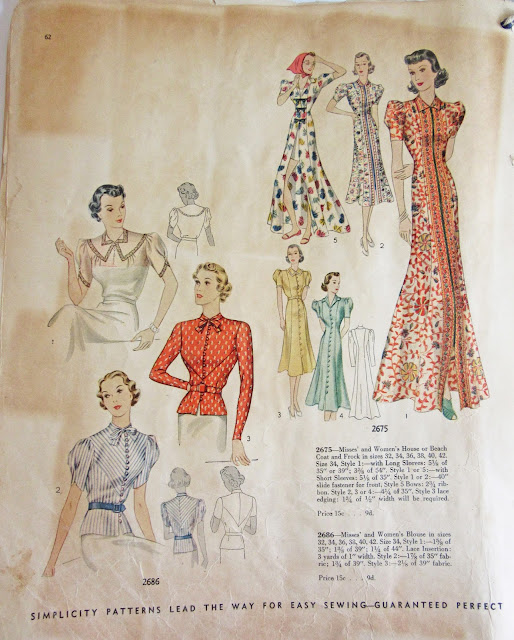So here is just a bit of my thought process on how I would do it if I had the time (jury is still out on where said time will come from).
First I would start with a basic 1920's foundation slip. These are easily made, and can often be whipped up in about an hour.
I have a couple that would fit the bill of having a straight top and bottom with few frills and Depew #3032 is easiest to make. This I would sew out of opaque rayon or satin.
 |
1920's Draped Slip #3032 (1928) |
 |
1920’s Martial et Armand Couture Dress #3063 (1927) |
This pattern was adapted from a Martial et Armand couture pattern released in 1927 and has a lot of little details in common, especially the long bloused sleeves that end in tied cuffs, just like the dress in a bag.
The blouse also had a band of rosettes at the hem (I'm assuming, it was badly injured here) and these I would likely add to the tied band at the hem of the couture blouse. If one wanted to be very like the dress, the ties could be trimmed short and replaced with an Art Deco buckle, or a hook and eye closure hiding behind a rosette!
To make the rosettes is simple, they're really just a strip of fabric about 2" wide, sewn together along the long edge to hide raw edges, turned, and twisted a bit and pressed flat with a hidden stitch here and there. You can also learn how to make more complicated rosettes from Ribbon Art.
As for the lace inset at the back, that's pretty easy. It's is about 3/4 the height of the back of the blouse, and about 5" wide at the bottom. I would choose a piece of lace, cut it out, and applique-stitch it to the back of the blouse, then cut away the blouse fabric underneath once that was securely stitched in place.
And that would be that! How about you? Have you ever tried to copy a damaged garment with vintage patterns? Or have you tried to restore something badly in need of repair instead? I'd love to hear your tales - what would you do with this dress?

















































